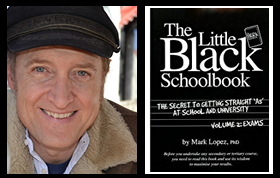Dr Mark’s The Meaning in a Nutshell
Mark Twain, The Adventures of Huckleberry Finn (1884)
Mark Twain’s The Adventures of Huckleberry Finn (1884) is a more ambitious and sophisticated sequel to his earlier novel The Adventures of Tom Sawyer (1876). The Adventures of Huckleberry Finn is a boyhood adventure story featuring the travels of Huck Finn along the Mississippi River that provide a means for the author to explore fundamental issues relating to the American, and human, experience. These issues include negotiating the tension between the urge for freedom and the demands of settled urban civilisation; appreciating the role the wilderness can play as place where freedom can be achieved and experienced; exploring the problematic ethics of slavery; providing a commentary on the hypocrisy and boring nature of mainstream Christian religious practice; and, most of all, celebrating of the value of individualism and appreciating the fleeting opportunities afforded during boyhood, before an individual is completely socialised, to strike out independently to forge one’s own character and find more fulfilling values to live by.
In addition, The Adventures of Huckleberry Finn explores the nineteenth century debates between romanticism and realism. Mark Twain expresses ambivalence about romanticism, celebrating it when he appreciates the pedestrian pace of the pre-capitalist South, yet deploring it when he expresses his distaste for the false god of medieval chivalry popularised in the South and epitomised in the romantic novels of Sir Walter Scott. He celebrates the romanticism of the adventure of escaping the confines of settled urban life to live close to nature, yet he deplores the manufacturing of pseudo-adventures for adventure’s sake. Twain valued realism as a counter-balance to romanticism; in particular he appreciated its common sense solutions to problems and its practical approach to seeking an understanding of human nature.
Twain’s The Adventures of Huckleberry Finn also represents his attempt at artistic honesty with the author endeavouring to limit artistic compromise and self-censorship. In his earlier work, The Adventures of Tom Sawyer, the author embellished, euphemised, exaggerated, and sought more blatantly to entertain. By contrast, The Adventures of Huckleberry Finn represents the author’s attempt to be more honest and get closer to the truth as he saw it.
The novel also reflects the author’s love of language, in particular the idiosyncrasies of the American-English vernacular (or dialects) spoken by people who would have been like the characters in the novel, like Huck Finn or the runaway slave Jim. The spoken dialogue is spelt phonetically to record the style of speech and the accents prevalent in the regions about which Twain writes.
Student resources by Dr Mark Lopez
© Mark Lopez 2021 All RIGHTS RESERVED
The purpose of the concise notes of Dr Mark’s The Meaning in a Nutshell is to provide much needed help to students seeking to unlock the meaning of the texts with which they have to deal. (More elaborate notes are provided in lessons as part of my private tutoring business.)
Subject: The Adventures of Huckleberry Finn meaning, The Adventures of Huckleberry Finn themes, The Adventures of Huckleberry Finn analysis, The Adventures of Huckleberry Finn notes
